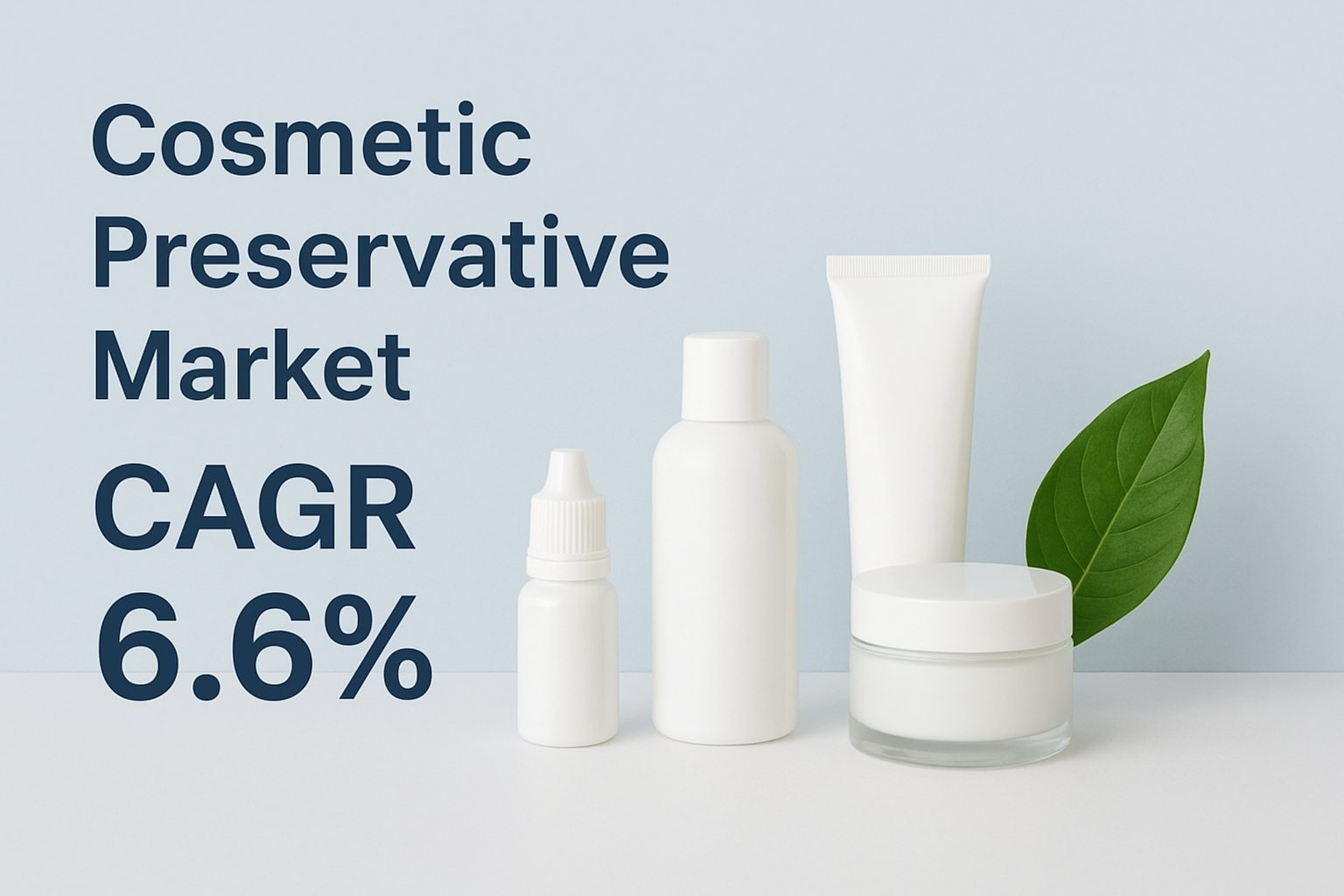The global cosmetic preservative market has entered a transformative growth phase driven by rising consumer awareness, increasing demand for natural and organic beauty products, and ongoing innovation in formulation technologies. Valued at USD 468.08 million in 2024, the market is expected to reach a remarkable USD 780.51 million by 2032, expanding at a compound annual growth rate (CAGR) of 6.6% from 2025 to 2032. This consistent growth trajectory underscores the vital role preservatives play in ensuring product safety, stability, and longevity across the booming cosmetics and personal care industry.
Understanding the Role of Preservatives in Cosmetics
Preservatives are essential ingredients in cosmetics, designed to prevent microbial contamination, extend shelf life, and maintain product integrity during use and storage. Without preservatives, products such as creams, shampoos, lotions, and makeup could become breeding grounds for bacteria, fungi, and yeast, leading to spoilage and potential health risks. The cosmetic industry relies on both synthetic and natural preservatives to balance efficacy, safety, and compatibility with various formulations.
The challenge, however, lies in developing preservatives that deliver robust antimicrobial protection without causing irritation or allergic reactions. This has led to a surge in research and innovation focused on mild, eco-friendly, and multifunctional preservative systems that align with modern consumer preferences and regulatory demands.
Market Growth Drivers
The strong growth of the cosmetic preservative market can be attributed to several interrelated factors shaping global beauty and personal care consumption patterns.
- Rising Demand for Natural and Organic Products
Consumers are increasingly seeking beauty products free from parabens, formaldehyde, and synthetic preservatives. This shift has encouraged manufacturers to develop plant-based or bio-derived preservatives with antimicrobial properties, such as organic acids, essential oils, and phenolic compounds. The trend toward “clean beauty” has become a defining feature of the industry, pushing innovation in naturally derived preservative technologies.
- Expanding Global Cosmetic Industry
The global cosmetics market continues to experience steady growth, fueled by increasing disposable income, urbanization, and lifestyle changes—especially in emerging economies across Asia-Pacific and Latin America. As product portfolios expand across skincare, haircare, and makeup, the need for effective preservation systems grows in tandem to ensure safety and compliance with global standards.
- Stringent Regulatory Frameworks
Regulatory bodies such as the U.S. FDA, the European Commission, and the Cosmetic, Toiletry, and Perfumery Association (CTPA) have established strict guidelines for the use of preservatives in cosmetic formulations. These regulations are compelling manufacturers to reformulate products using approved, non-toxic ingredients while maintaining efficacy. This compliance-driven innovation has opened doors for new preservative technologies that meet both safety and performance standards.
- Technological Advancements in Formulation
Recent developments in microencapsulation, controlled-release technologies, and synergistic blends of multiple preservatives are improving the stability and efficiency of cosmetic formulations. These innovations help brands meet the dual demand for minimal use of preservatives and maximum antimicrobial protection, ensuring longer product shelf life with reduced irritation potential.
Emerging Trends Reshaping the Cosmetic Preservative Market
The evolving dynamics of the beauty industry are giving rise to notable trends influencing the cosmetic preservative market landscape:
Shift Toward Multifunctional Ingredients:
Consumers now prefer formulations that do more than just preserve. Multifunctional preservatives that combine antimicrobial properties with skin-conditioning, moisturizing, or antioxidant benefits are gaining popularity among formulators seeking to optimize performance and reduce ingredient load.
Clean Label and Transparency Movement:
Brands are emphasizing transparency in ingredient labeling, allowing consumers to make informed choices. The demand for “free-from” products—free from parabens, sulfates, and synthetic additives—is leading to the use of mild, naturally derived preservatives like ethylhexylglycerin, phenoxyethanol, and benzyl alcohol.
Rising Popularity of Waterless and Solid Cosmetics:
Waterless beauty products such as solid shampoos, balms, and serums require fewer preservatives since the absence of water minimizes microbial growth. This innovation trend is influencing preservative formulation strategies and driving demand for alternative preservation systems suited for anhydrous formulations.
Sustainability and Green Chemistry:
The industry is witnessing a strong shift toward sustainable sourcing and eco-friendly chemistry. Manufacturers are focusing on biodegradable preservatives and eco-certifications to cater to environmentally conscious consumers and align with corporate sustainability goals.
Regional Insights
The Asia-Pacific region is emerging as the fastest-growing market for cosmetic preservatives, driven by the rapid expansion of the personal care industry in countries such as China, Japan, South Korea, and India. Increasing adoption of Western beauty standards, rising consumer spending power, and growth in e-commerce are major contributors to this trend.
North America and Europe, on the other hand, continue to dominate the market in terms of regulatory innovation and product development. The emphasis on clean-label formulations, strict compliance requirements, and the presence of leading cosmetic brands foster a mature yet dynamic market environment.
Latin America and the Middle East & Africa are gradually gaining traction as emerging markets, supported by expanding beauty retail infrastructure and growing awareness about product safety and hygiene.
Future Outlook: Toward Safer and Smarter Preservation
The future of the cosmetic preservative market lies in innovation, transparency, and sustainability. As consumer preferences evolve, manufacturers are expected to adopt hybrid approaches that combine synthetic efficiency with natural credibility. Collaborative efforts between cosmetic formulators, ingredient suppliers, and regulatory bodies will continue to define the next generation of safe, high-performance preservatives.
With continuous technological advancements, the rise of biotechnology-based ingredients, and an ever-growing focus on safety and sustainability, the global cosmetic preservative market is set to thrive well into the next decade. By 2032, this market will not only surpass the USD 780 million mark but also redefine how beauty brands approach preservation—prioritizing consumer trust, environmental responsibility, and scientific innovation in every formulation.

